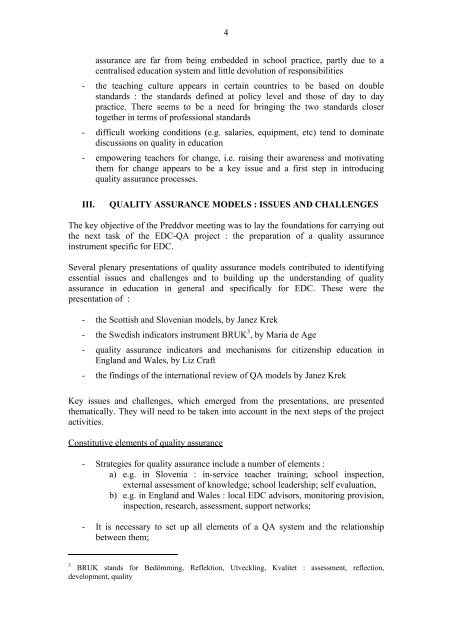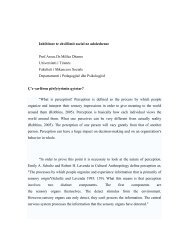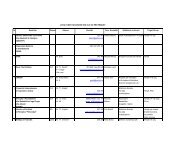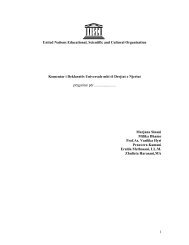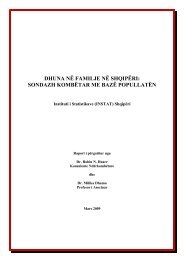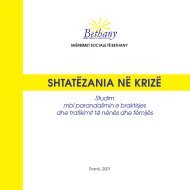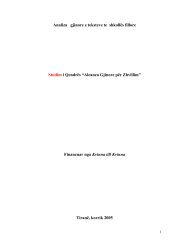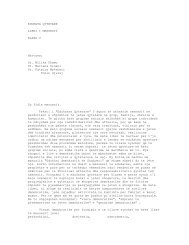FROM POLICY TO EFFECTIVE PRACTICE ... - Milika Dhamo
FROM POLICY TO EFFECTIVE PRACTICE ... - Milika Dhamo
FROM POLICY TO EFFECTIVE PRACTICE ... - Milika Dhamo
You also want an ePaper? Increase the reach of your titles
YUMPU automatically turns print PDFs into web optimized ePapers that Google loves.
4<br />
assurance are far from being embedded in school practice, partly due to a<br />
centralised education system and little devolution of responsibilities<br />
- the teaching culture appears in certain countries to be based on double<br />
standards : the standards defined at policy level and those of day to day<br />
practice. There seems to be a need for bringing the two standards closer<br />
together in terms of professional standards<br />
- difficult working conditions (e.g. salaries, equipment, etc) tend to dominate<br />
discussions on quality in education<br />
- empowering teachers for change, i.e. raising their awareness and motivating<br />
them for change appears to be a key issue and a first step in introducing<br />
quality assurance processes.<br />
III.<br />
QUALITY ASSURANCE MODELS : ISSUES AND CHALLENGES<br />
The key objective of the Preddvor meeting was to lay the foundations for carrying out<br />
the next task of the EDC-QA project : the preparation of a quality assurance<br />
instrument specific for EDC.<br />
Several plenary presentations of quality assurance models contributed to identifying<br />
essential issues and challenges and to building up the understanding of quality<br />
assurance in education in general and specifically for EDC. These were the<br />
presentation of :<br />
- the Scottish and Slovenian models, by Janez Krek<br />
- the Swedish indicators instrument BRUK 3 , by Maria de Age<br />
- quality assurance indicators and mechanisms for citizenship education in<br />
England and Wales, by Liz Craft<br />
- the findings of the international review of QA models by Janez Krek<br />
Key issues and challenges, which emerged from the presentations, are presented<br />
thematically. They will need to be taken into account in the next steps of the project<br />
activities.<br />
Constitutive elements of quality assurance<br />
- Strategies for quality assurance include a number of elements :<br />
a) e.g. in Slovenia : in-service teacher training; school inspection,<br />
external assessment of knowledge; school leadership; self evaluation,<br />
b) e.g. in England and Wales : local EDC advisors, monitoring provision,<br />
inspection, research, assessment, support networks;<br />
- It is necessary to set up all elements of a QA system and the relationship<br />
between them;<br />
3<br />
BRUK stands for Bedömming, Reflektion, Utveckling, Kvalitet : assessment, reflection,<br />
development, quality


